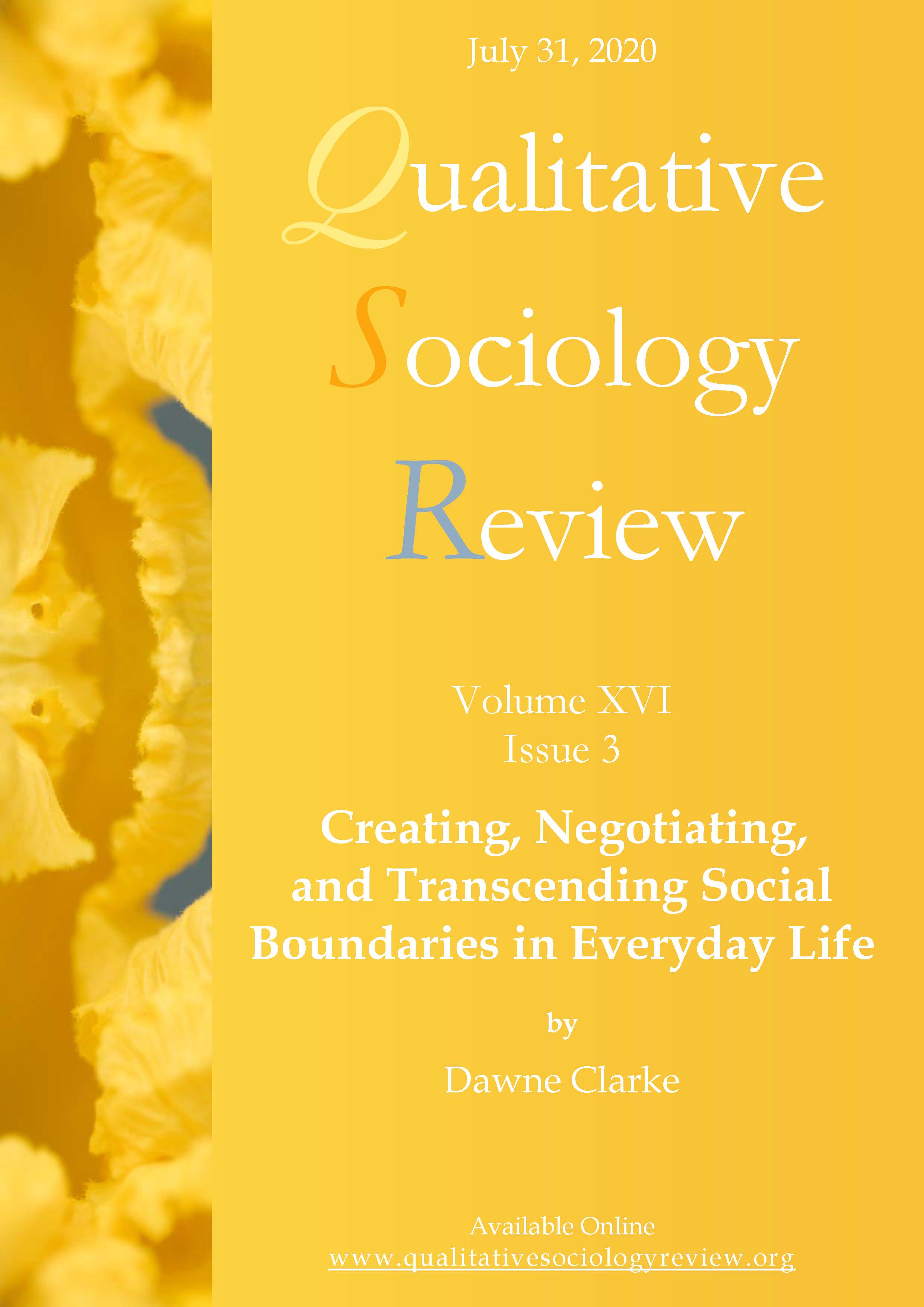An Attempt to Restore the Ordinary Death to the Visual Realm—Artistic, Therapeutic, and Ethical Aspects of the Post-Mortem Photography of Children in the 21st Century. Short Introduction
DOI:
https://doi.org/10.18778/1733-8077.16.3.07Keywords:
Post-Mortem Photography of Children, Bereavement Process, Parent’s GriefAbstract
Post-mortem photography was a transcendental element in the 19th century, which not only democratized portraiture, but also helped in the bereavement process. The comeback of post-mortem photography as a psychological tool helping parents of deceased children to cope with death was only a matter of time. The role and importance of memento-moris has to be taken into account in order to make significant changes in the grieving process, but all of the aspects of this kind of photography need to be considered. The artistic, therapeutic, and ethical dimensions of post-mortem photography in the 21st century has its rules, and those rules need to be followed. The article constitutes only a part of the research devoted to the bereavement process from a sociological perspective.
Downloads
References
Aytemiz, Pelin. 2011. “Death as Absence: Death Related Photographic Representations.” Draft paper. Retrieved November 27, 2019 http://www.inter-disciplinary.net/wp-content/uploads/2011/10/aytemizdpaper.pdf
Google Scholar
Barthes, Roland. 1996. Światło obrazu. Uwagi o fotografii [Camera Lucida: Reflections on Photography]. Warsaw: Wydawnictwo KR.
Google Scholar
Blood, Cybele and Joanne Cacciatore. 2014a. “Best Practice in Bereavement Photography after Perinatal Death: Qualitative Analysis with 104 Parents.” BMC Psychology 2:15. Retrieved November 27, 2019 http://bmcpsychology.biomedcentral.com/articles/10.1186/2050-7283-2-15
Google Scholar
DOI: https://doi.org/10.1186/2050-7283-2-15
Blood, Cybele and Joanne Cacciatore. 2014b. “Parental Grief and Memento Mori Photography: Narrative, Meaning, Culture, and Context.” Death Studies 38:224-233.
Google Scholar
DOI: https://doi.org/10.1080/07481187.2013.788584
Bowlby, John. 2016. Przywiązanie [Attachment]. Warsaw: Państwowe Wydawnictwo Naukowe.
Google Scholar
Brown, Nicola. 2009. “Empty Hands and Precious Picture: Post-Mortem Portrait Photographs of Children.” Australasian Journal of Victorian Studies 14(2):8-24.
Google Scholar
Cluff, Troy. 2014. Peaceful Ironies: The History and Aesthetics of Postmortem Photography in Quebec and Ontario (19th and 20th Centuries). MA Dissertation, Concordia University in Montreal, Quebec. Retrieved November 27, 2019 http://spectrum.library.concordia.ca/978903/1/Cluff_MA_F2014.pdf
Google Scholar
Ferenc, Tomasz. 2011. “Fotografia i śmierć – historia pewnego uwikłania i realna styczność [Photography and Death—The Story of a Certain Entanglement and Real Contact].” Kwartalnik Fotografia 35. Retrieved November 27, 2019 https://www.academia.edu/4742794/Fotografia_i_%C5%9Bmier%C4%87
Google Scholar
Harvey, Sheila, Snowdon Claire, and Diana Elbourne. 2008. “Effectiveness of Bereavement Interventions in Neonatal Intensive Care: A Review of the Evidence.” Seminars in Fetal & Neonatal Medicine 13:341-356.
Google Scholar
DOI: https://doi.org/10.1016/j.siny.2008.03.011
Iepson, Sarah M. 2014. “Perpetual Corporeality. Affect Theory and Posthumous Photographs of Children in Nineteenth-Century America.” Journal of the Lucas Graduate Conference 2:12-28.
Google Scholar
Kamińska, Ewelina. 2013. “Między śmiercią, fotografią i antropologią. Kilka uwag o XIX-wiecznej i współczesnej fotografii post mortem [Between Death, Photography and Anthropology. A Few Remarks on 19th Century and Contemporary Post Mortem Photography].” Okolice. Rocznik Etnograficzny 11:115-129.
Google Scholar
Kaplan, Louise J. 1995. Lost Children. Separation and Loss between Children and Parents. Glasgow: Harper Collins Manufacturing.
Google Scholar
Kohner, Nancy. 2000. “Pregnancy Loss and the Death of a Baby. Parents’ Choices.” Pp. 355-359 in Death, Dying and Bereavement, edited by D. Dickson, M. Johnson, and J. Samson Katz. London: SAGE Publications.
Google Scholar
Komaromy, Carol et al. 2007. “A Social Insight into Bereavement and Reproductive Loss.” Retrieved November 27, 2019 http://oro.open.ac.uk/12653/1/A_social_insight_into_be-reavement_and_reproductive_loss.pdf
Google Scholar
Linkman, Audrey. 2006. “Taken from Life: Post-Mortem Portraiture in Britain, 1860-1919.” History of Photography 30(4):309-347.
Google Scholar
DOI: https://doi.org/10.1080/03087298.2006.10443484
Mendelyté, Aténé. 2012. “Death (in the Eye) of the Beholder: An Encounter with Victorian Post-Mortem Photography.” Synaesthesia: Communication Across Cultures 1(3):84-90.
Google Scholar
Munforte, Patrizia. 2015. “The Body of Ambivalence: The ‘Alive, Yet Dead’ Portrait in the Nineteenth Century.” Re*bus 7:75-104.
Google Scholar
Pettit, Katherine. 2006. “Metamorphic Death: Post-Mortem & Spirit Photography in Narrative Cinema.” Cinephile 2:35-39.
Google Scholar
Pietrzyk, Anna. 2015. “Fotografia pogrzebowa w polskiej obyczajowości wczoraj i dziś [Funeral Photography in Polish Customs Yesterday and Today].” Ogrody Nauki i Sztuki 5:541-551.
Google Scholar
DOI: https://doi.org/10.15503/onis2015.541.551
Riechers, Angela. 2012. “Eternal Recall: Memorial Photos in the Digital Environment.” Retrieved November 27, 2019 https://core.ac.uk/display/21728921
Google Scholar
Sontag, Susan. 2009. O fotografii [On Photography]. Cracow: Wydawnictwo Karakter.
Google Scholar
Sztompka, Piotr. 2012. “Wyobraźnia wizualna i socjologia [Visual Imagination and Sociology].” Pp. 11-42 in Fotospołeczeństwo. Antologia tekstów z socjologii wizualnej [Photo-Society. Anthology of Texts from Visual Sociology], edited by M. Bogunia-Borowska and P. Sztompka. Cracow: Wydawnictwo Znak.
Google Scholar
Wang, Dongjie. 2015. “A History of Post-Mortem Photography.” Retrieved November 27, 2019 http://www2.ohlone.edu/org/library/wang.pdf
Google Scholar
Weesjes, Elke. 2013, April 3. “‘Don’t Move’—A Short History of Post-Mortem Photography.” United Academics Blog. Retrieved November 27, 2019 https://www.academia.edu/8837116/Dont_Move_-_A_Short_History_of_Post-Mortem_Photography
Google Scholar
Downloads
Published
How to Cite
Issue
Section
License

This work is licensed under a Creative Commons Attribution-NonCommercial-NoDerivatives 4.0 International License.











